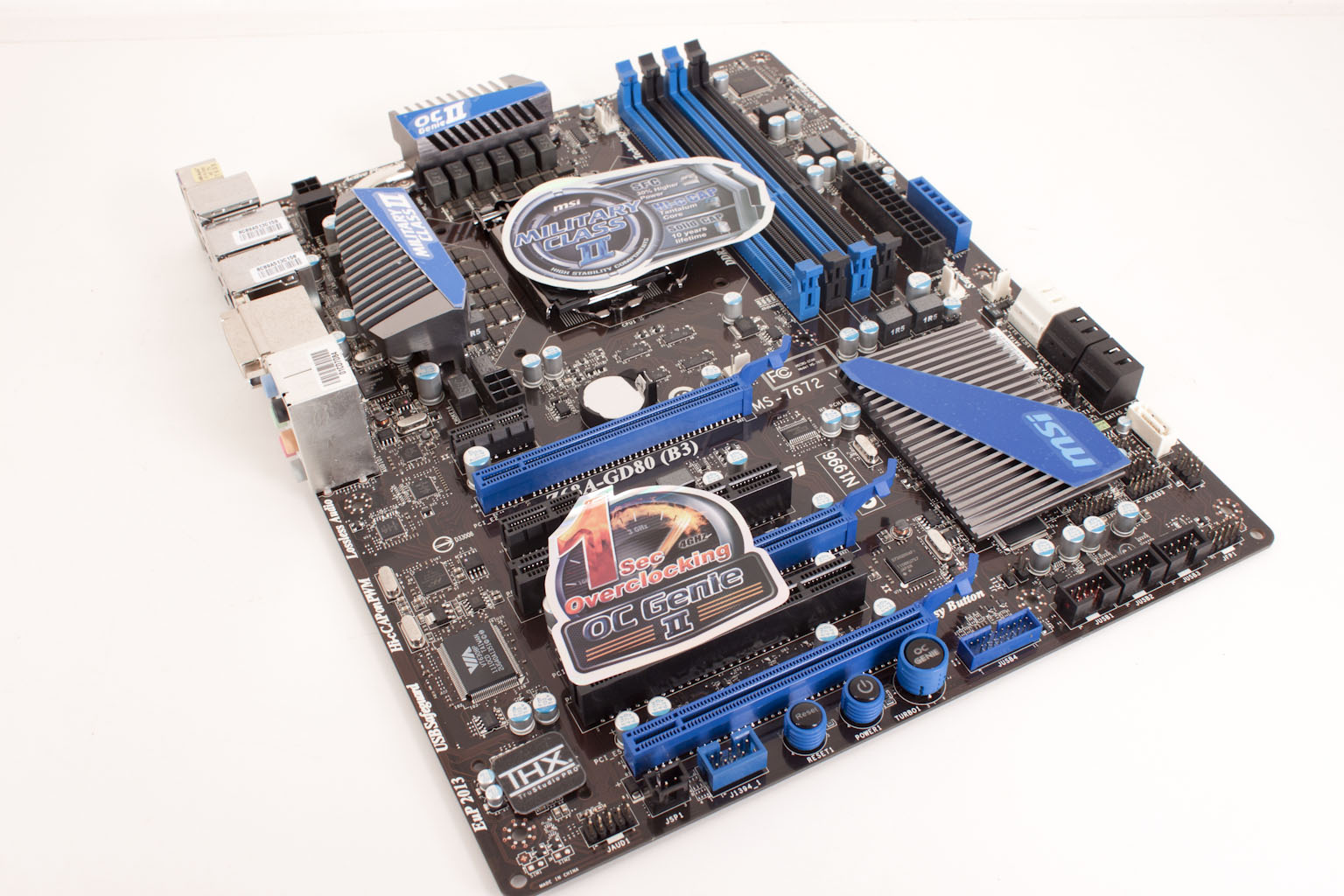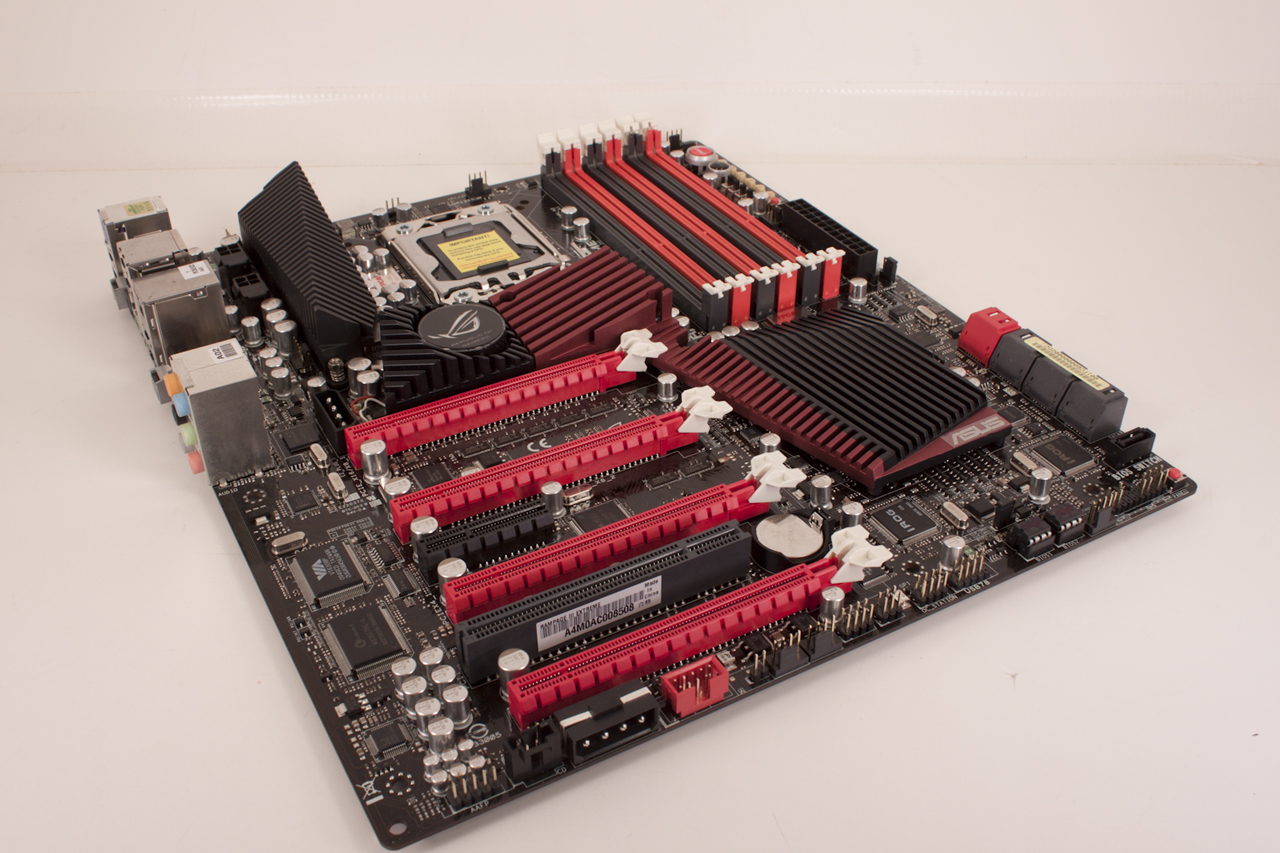Motherboards
 At the request of some of our readers we are going to start splitting up the way we do our reviews. However, instead of the normal “unboxings” that we find out on the Internet we are going to break up our normal review into two distinct parts. There will be the first part that will cover design choices, board layout, and features. This will be followed up with our normal performance section. We feel that this will give everyone the pieces and parts they are looking for. You can still read both (they will be crosslinked) and also discuss them on our new forum, but this way we can cover things quicker and in a more complete fashion without making each review too long. For our first dive into this new style we have the MSI Z68A-GD80B3 up on the test bench and behind the camera lens. This board follows the same trend as most of MIS’s recent product, but now they are into their second generation; you get Military Class II and OC Genie II. So let’s dive into the more theoretical part of our review and take a look at the packaging, board layout and the features for the MSI Z68A-GD80B3.
At the request of some of our readers we are going to start splitting up the way we do our reviews. However, instead of the normal “unboxings” that we find out on the Internet we are going to break up our normal review into two distinct parts. There will be the first part that will cover design choices, board layout, and features. This will be followed up with our normal performance section. We feel that this will give everyone the pieces and parts they are looking for. You can still read both (they will be crosslinked) and also discuss them on our new forum, but this way we can cover things quicker and in a more complete fashion without making each review too long. For our first dive into this new style we have the MSI Z68A-GD80B3 up on the test bench and behind the camera lens. This board follows the same trend as most of MIS’s recent product, but now they are into their second generation; you get Military Class II and OC Genie II. So let’s dive into the more theoretical part of our review and take a look at the packaging, board layout and the features for the MSI Z68A-GD80B3.
- Details
- By Sean Kalinich
- Hits: 10314
 Overclocking is a big deal these days. I can remember when it was just a bunch of crazed guys with too much money and free time on their hands. We used to do things like solder new resistors onto CPUs (the Slot A Athlons), swap out caps and resistors on motherboards to get more voltage through the boards and to the CPU. I vividly remember building water cooling kits with pool pumps and tubing bought from Home Depot. Once I even pulled a radiator from a Coke vending machine (old and broken) for a rig I was building. Well thankfully those days are over (but it would still be fun to do some of this). Motherboard makers are now designing and building motherboards with top of the line components voltage regulation systems and tracing that is laid out for business. Many have world class overclockers that work for them to get the most performance out of each and every motherboard. Every now and then they get to build something special from the ground up. We are taking a look at one of these boards that has been built for speed. The one we have in-house was designed by HiCookie; the resident overclocker at Gigabyte. This is the X58A-OC (the OC is for Overclocking as if you could not guess).
Overclocking is a big deal these days. I can remember when it was just a bunch of crazed guys with too much money and free time on their hands. We used to do things like solder new resistors onto CPUs (the Slot A Athlons), swap out caps and resistors on motherboards to get more voltage through the boards and to the CPU. I vividly remember building water cooling kits with pool pumps and tubing bought from Home Depot. Once I even pulled a radiator from a Coke vending machine (old and broken) for a rig I was building. Well thankfully those days are over (but it would still be fun to do some of this). Motherboard makers are now designing and building motherboards with top of the line components voltage regulation systems and tracing that is laid out for business. Many have world class overclockers that work for them to get the most performance out of each and every motherboard. Every now and then they get to build something special from the ground up. We are taking a look at one of these boards that has been built for speed. The one we have in-house was designed by HiCookie; the resident overclocker at Gigabyte. This is the X58A-OC (the OC is for Overclocking as if you could not guess).
- Details
- By Sean Kalinich
- Hits: 18299
Read more: The X58A-OC from Gigabyte hits our Lab for some...
 As you saw with our recent coverage of the Gigabyte Open Overclocking Competition (GOOC) North American Finals Gigabyte is pushing their way back into the fore front of the enthusiast scene. It was not that long ago when their mindset seemed to be one of just maintaining the status quo and building boards for the average consumer. But something changed their minds and they decided to refocus on the enthusiast and the upper end of the consumer market (the upper-mid-range?) We began to see Gigabyte (or GB for short) drop things in like 2 ounces of copper into each board. They shifted away from standard capacitors and move to all solid caps. They beefed up their power phases and even added in a hardware/software phase switching capability for better energy efficiency. GB seems to be willing and able to push the envelope of the enthusiast’s needs and even some of their crazed wants with their newest additions to the Ultra Durable line up. They have shown us great promise with their Intel based boards, so how about something from AMD? Not that long ago we took a look at the 890FXA-UD7 with AMD’s flagship CPU the Phenom II X6 1090T just to see if Gigabyte can maintain the same performance levels with AMD as they have shown with Intel’s CPUs.
As you saw with our recent coverage of the Gigabyte Open Overclocking Competition (GOOC) North American Finals Gigabyte is pushing their way back into the fore front of the enthusiast scene. It was not that long ago when their mindset seemed to be one of just maintaining the status quo and building boards for the average consumer. But something changed their minds and they decided to refocus on the enthusiast and the upper end of the consumer market (the upper-mid-range?) We began to see Gigabyte (or GB for short) drop things in like 2 ounces of copper into each board. They shifted away from standard capacitors and move to all solid caps. They beefed up their power phases and even added in a hardware/software phase switching capability for better energy efficiency. GB seems to be willing and able to push the envelope of the enthusiast’s needs and even some of their crazed wants with their newest additions to the Ultra Durable line up. They have shown us great promise with their Intel based boards, so how about something from AMD? Not that long ago we took a look at the 890FXA-UD7 with AMD’s flagship CPU the Phenom II X6 1090T just to see if Gigabyte can maintain the same performance levels with AMD as they have shown with Intel’s CPUs.
- Details
- By Sean Kalinich
- Hits: 19994
Read more: Gigabyte's 890FXA-UD7 gets run through the wringer
When you talk about gaming, overclocking and performance there are always a couple of names that pop up. One name that is sure to pop up in the conversation is the name of Asus. Asus has been making great products (along with the not so great) for many years. However, with the launch of Intel’s Nehalem and AMD’s Phenom II Asus has really took off. Their flagship Republic of Gamers (ROG) line has simply been stellar. It is one of these that we are taking a look at today. In the lab we have the Asus ROG Rampage III Extreme (RIIIE). This $380 board packs a ton of features and performance into an attractive red and black ATX package. Let’s see just what $380 gets you for performance.
- Details
- By Sean Kalinich
- Hits: 35698
Page 9 of 9




